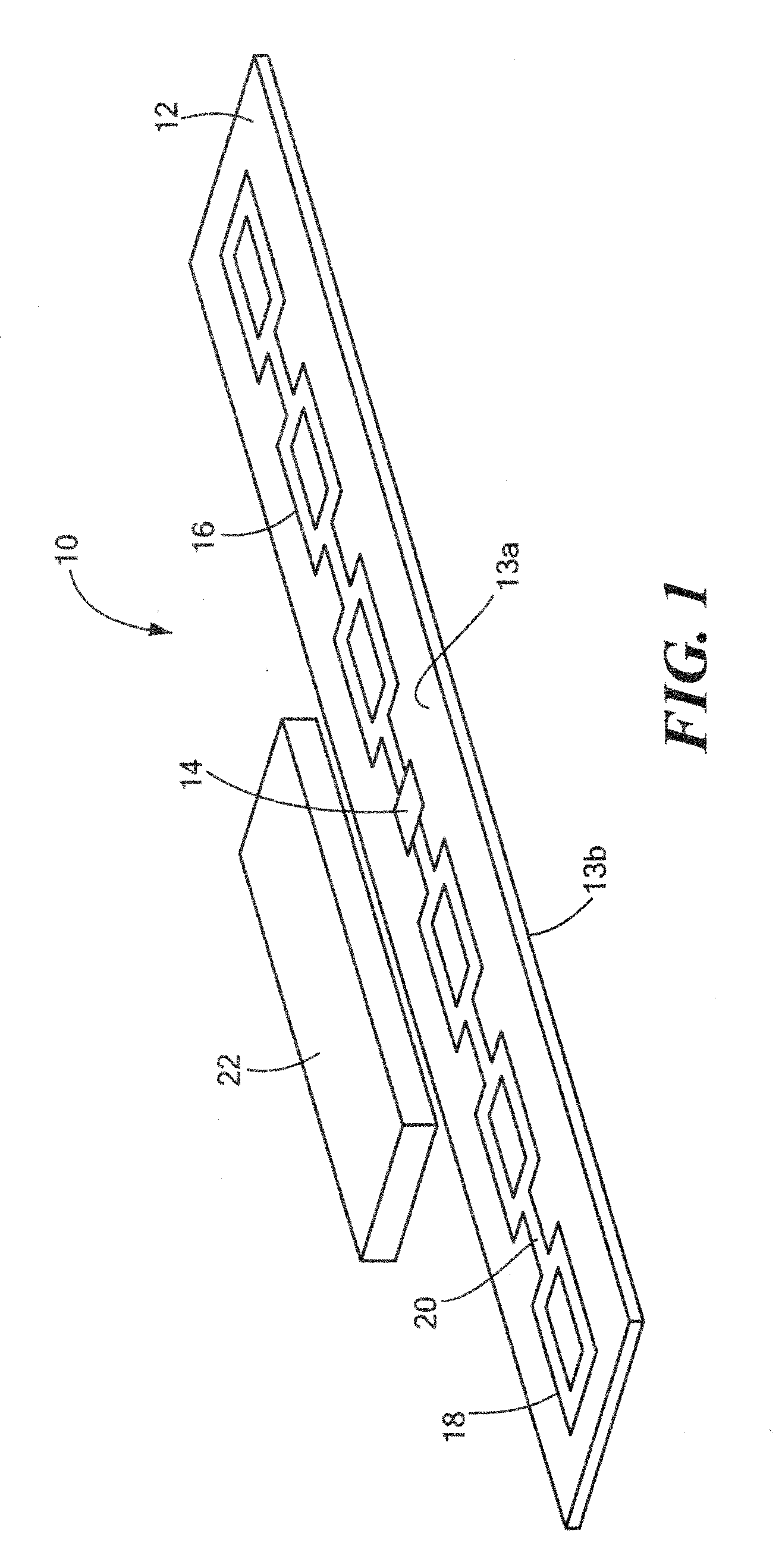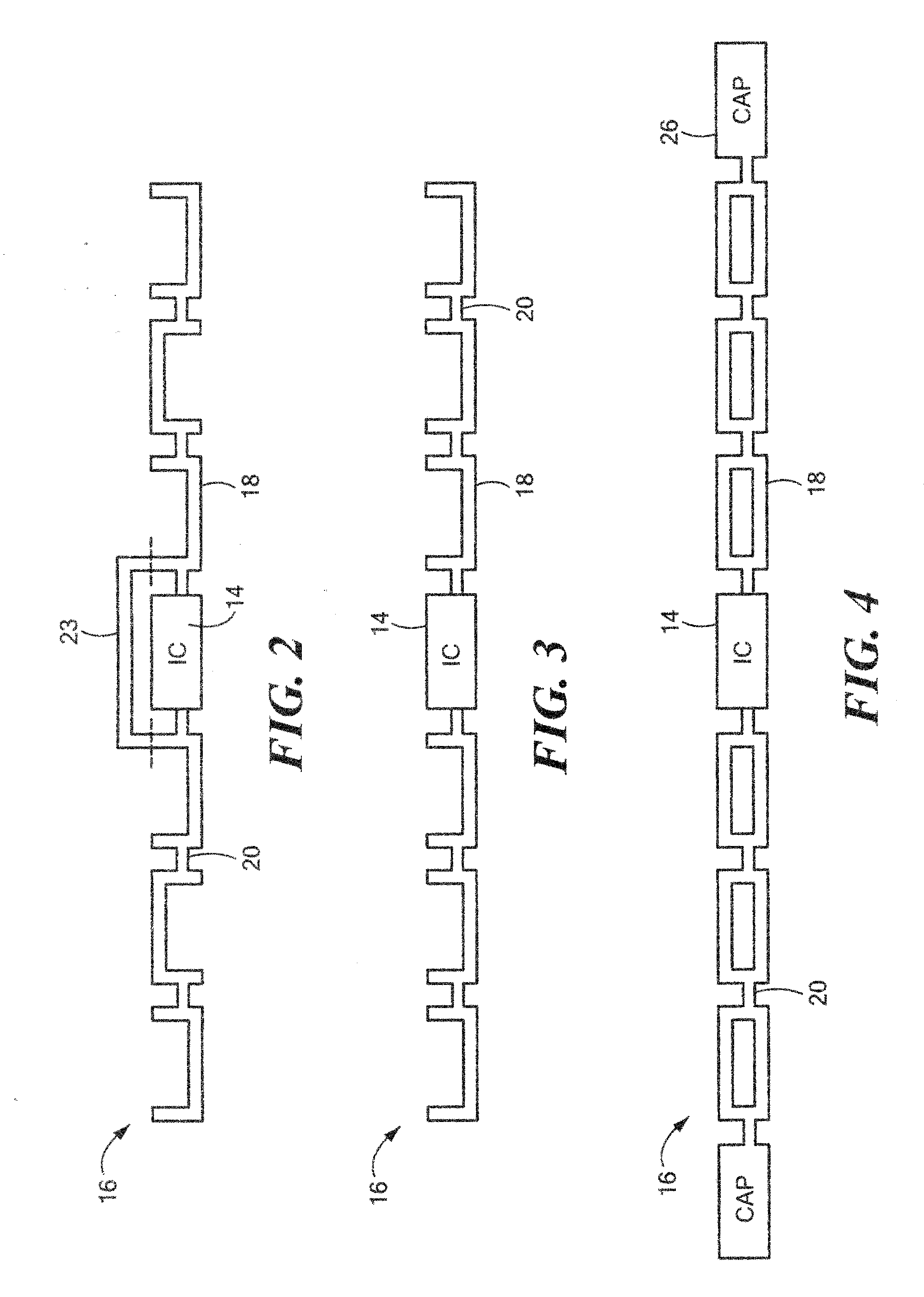RFID antenna system and method
a technology of rfid antenna and antenna system, which is applied in the field of radio frequency identification (“ rfid”) communication, can solve the problems of reducing the operating range of an interrogator, and reducing the efficiency of the rfid power transfer
- Summary
- Abstract
- Description
- Claims
- Application Information
AI Technical Summary
Benefits of technology
Problems solved by technology
Method used
Image
Examples
Embodiment Construction
[0021]Referring now to the drawing figures in which like reference designators refer to like elements, there is shown in FIG. 1 a diagram of an exemplary apparatus constructed in accordance with the principles of the present invention and designated generally as “10”. Apparatus 10 is an RFID device that may generally include a substrate body 12, with an integrated circuit (“IC”) component 14 coupled to the substrate body 12, as well as an antenna 16 disposed on the substrate body 12 in electrical communication with the IC component 14. Antenna 16 may generally include a pattern of conductive material. In particular, the antenna 16 may include a plurality of substantially square or rectangular shaped polygons 18 having squared or rounder corners, where a portion of the polygons 18 are hollowed out, i.e., do not contain a conductive material. The plurality of polygons 18 may be electrically coupled to one another by a strip or portion of conductive material 20 connecting each polygon ...
PUM
 Login to View More
Login to View More Abstract
Description
Claims
Application Information
 Login to View More
Login to View More - R&D
- Intellectual Property
- Life Sciences
- Materials
- Tech Scout
- Unparalleled Data Quality
- Higher Quality Content
- 60% Fewer Hallucinations
Browse by: Latest US Patents, China's latest patents, Technical Efficacy Thesaurus, Application Domain, Technology Topic, Popular Technical Reports.
© 2025 PatSnap. All rights reserved.Legal|Privacy policy|Modern Slavery Act Transparency Statement|Sitemap|About US| Contact US: help@patsnap.com



